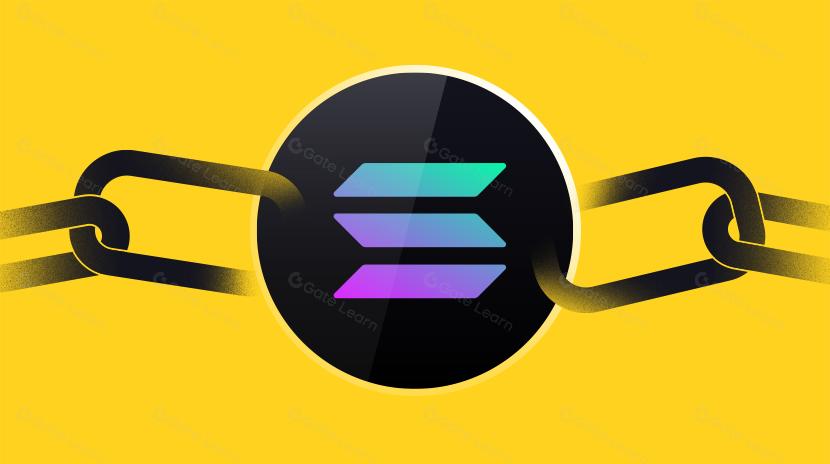cross chain bridge

Cross-chain bridges are technological infrastructures that connect different blockchain networks, allowing the free flow of value, data, and information between otherwise isolated blockchain ecosystems. As a critical component of blockchain interoperability solutions, cross-chain bridges break the boundaries between separate blockchain networks, enabling users to transfer assets across different chains without relying on centralized exchanges. With the rapid growth and fragmentation of the blockchain industry, cross-chain bridge technology has become an essential cornerstone for building a unified, interconnected blockchain ecosystem.
Background: What is the origin of cross-chain bridge?
The concept of cross-chain bridges emerged from the need to solve the "blockchain island problem." In the early stages of blockchain development, various blockchain networks like Bitcoin, Ethereum, and others operated as closed systems in isolation, unable to directly exchange value with one another. As blockchain use cases expanded, especially with the rise of decentralized finance (DeFi), the market demand for interoperability between different blockchains grew significantly.
The first cross-chain bridges began to appear between 2017 and 2018, as multi-chain architecture concepts became more widespread. Notable examples include Wrapped Bitcoin (WBTC), which bridges Bitcoin to Ethereum, and later developments like Polygon Bridge and Arbitrum Bridge that offer Layer 2 cross-chain solutions.
The evolution of cross-chain bridge technology has generally occurred in three phases:
- Centralized custodial models: Early bridges relied on trusted third parties to custody assets
- Federation consensus models: Utilizing multi-signature mechanisms where multiple validators jointly manage cross-chain assets
- Decentralized bridging: Employing advanced technologies like zero-knowledge proofs and state channels to achieve higher security and trustlessness in cross-chain operations
Work Mechanism: How does cross-chain bridge work?
Cross-chain bridges can be classified into several types based on their technical implementation:
Lock-and-Mint Model: This is the most common bridge mechanism. When users initiate a cross-chain request, their original assets are locked in a smart contract on the source chain, while an equivalent amount of wrapped tokens is minted on the destination chain. When users want to redeem their original assets, the wrapped tokens are burned, and the original assets are released from the locked state.
Liquidity Pool Model: This model enables cross-chain asset transfers by maintaining liquidity pools on different chains. After depositing assets on the source chain, users can withdraw equivalent assets from the liquidity pool on the destination chain without waiting for confirmation processes.
Message Passing Model: This mechanism focuses on inter-chain communication rather than just asset transfers, supporting cross-chain smart contract calls and data transmission. It typically relies on a network of relayers to verify and transmit cross-chain messages.
A typical cross-chain bridge transaction involves the following steps:
- User initiates a cross-chain request, specifying the destination chain and receiving address
- Smart contract on the source chain locks or burns the user's assets
- The bridge protocol verifies this transaction and collects sufficient confirmations
- Smart contract on the destination chain mints equivalent assets or releases pre-stored liquidity
- User receives the corresponding assets on the destination chain
What are the risks and challenges of cross-chain bridge?
Security Risks: Cross-chain bridges manage large amounts of assets, making them prime targets for hackers. Between 2021-2022, security incidents involving cross-chain bridges resulted in losses exceeding $2 billion, including notable exploits of Ronin Bridge, Wormhole, and Nomad.
Trust Assumptions: Different cross-chain bridge solutions require varying degrees of trust assumptions, ranging from fully centralized custody to multi-party computation and zero-knowledge proofs, often requiring trade-offs between security and efficiency.
Technical Complexity: Cross-chain bridges must handle differences in consensus mechanisms, transaction formats, and smart contract standards across blockchains, increasing implementation difficulty and potential points of failure.
Liquidity Fragmentation: The proliferation of cross-chain bridges has led to liquidity being dispersed across different solutions, reducing overall efficiency.
Regulatory Uncertainty: Cross-chain operations involve multiple blockchain networks and jurisdictions, creating complex regulatory compliance challenges.
To address these challenges, the industry is exploring standardized protocols, more robust security audit mechanisms, on-chain insurance, and decentralized monitoring systems.
As critical infrastructure for blockchain interoperability, cross-chain bridges are essential for building a truly interconnected multi-chain ecosystem. Despite currently facing significant security and technical challenges, as technology advances and industry standards mature, cross-chain bridges will continue to facilitate the free flow of blockchain assets and information, ultimately enabling widespread blockchain interconnectivity. The evolution of cross-chain technology is also gradually expanding from simple asset transfers to more complex cross-chain smart contract calls and decentralized application interoperability, signaling a more open and interconnected future for the blockchain Web3 ecosystem.
Share
Related Articles

In-depth Explanation of Yala: Building a Modular DeFi Yield Aggregator with $YU Stablecoin as a Medium

The Future of Cross-Chain Bridges: Full-Chain Interoperability Becomes Inevitable, Liquidity Bridges Will Decline
